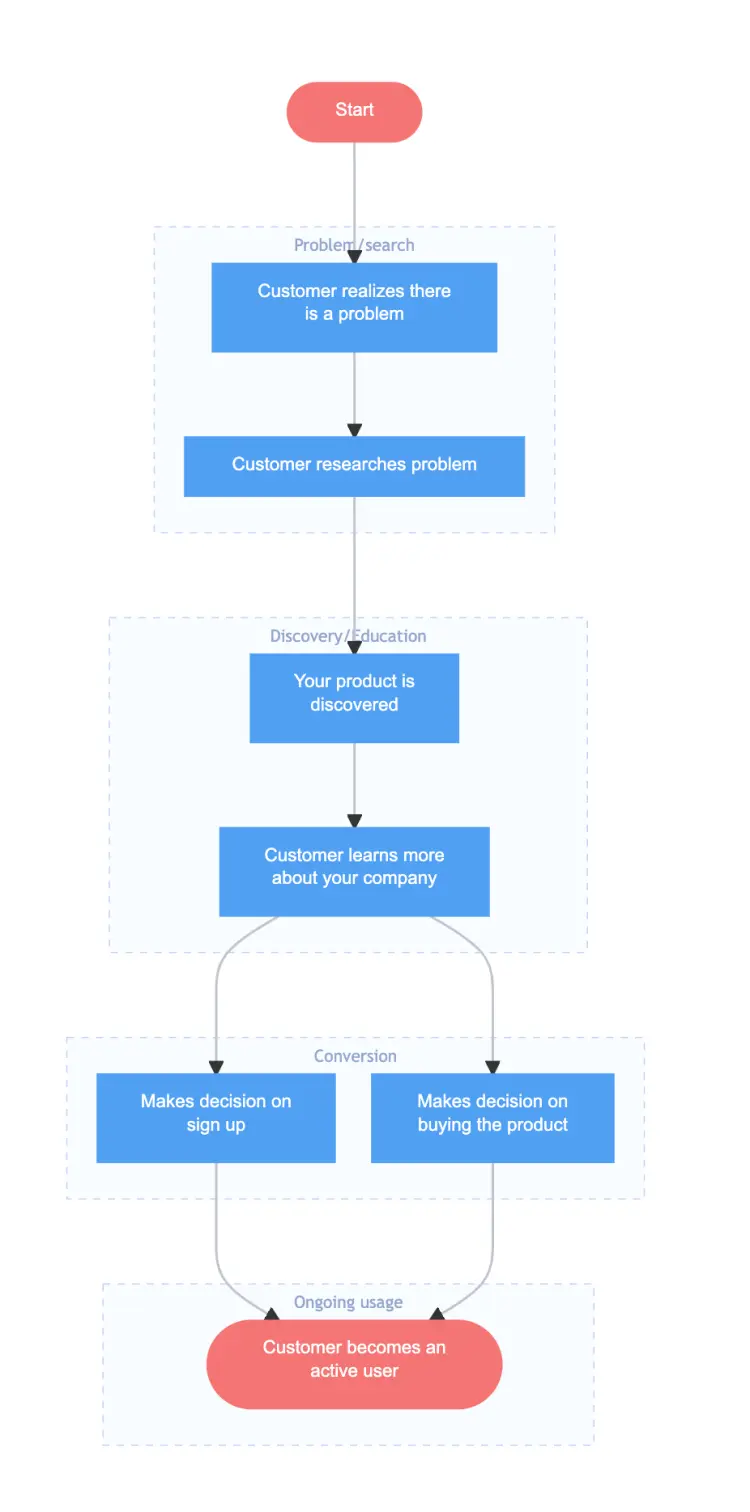The end-to-end customer journey starts with the problem/search stage. The customer realizes there is a problem/need, and researches the problem and its solution. The next stage is discovery/education. In this step, the user discovers your product and learns more about your company. In the conversion stage, the customer makes a decision to either sign up or purchase the product/service. The last stage is ongoing usage, where the customer becomes an active user.

Edit this diagram in Gleek
E2E customer journey diagram code in Gleek
Start:queue
/g Problem/search
Start–>Customer realizes there is a problem
Customer realizes there is a problem–>Customer researches problem
/g Discovery/Education
Customer researches problem–>Your product is discovered
Your product is discovered–>Customer learns more about your company
/g Conversion
Customer learns more about your company–>Makes decision on sign up
Customer learns more about your company–>Makes decision on buying the product
/g Ongoing usage
Makes decision on sign up–>Customer becomes an active user:queue
Makes decision on buying the product–>Customer becomes an active user:queue
About Flowcharts
A flowchart, or flow chart, is a type of diagram that shows a step-by-step view of a process. Flowcharts document the tasks and decisions needed to achieve a specific goal. A basic flowchart is easy to make and understand. Businesses, engineers and software designers often use flowcharts to diagram their ideas.
Similar flowchart examples
Sale funnel structure flowchart
Content marketing process flowchart
Lead generation with LinkedIn Sales Navigator flowchart